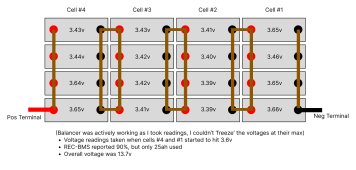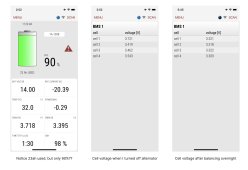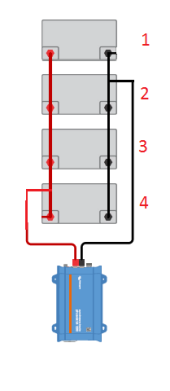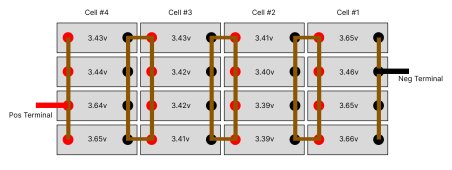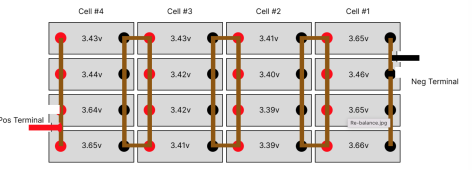Hello everyone,
I wanted to post an update plus some questions. I purchased 1100ah from Xuba on July 20, 2020 after finding this forum and have been living with these batteries full time on our live aboard sailboat. Overall I have had ZERO issues with these batteries, have done ZERO maintenance and I'm very pleased considering their price point.
Brief overview of system:
BMS = REC-BMS
Charger = Victron MultiPlus being externally controlled by the REC-BMS (100% run from generator since we haven't stopped in a marina)
Alternator = Balmar 140amp with their programmable regulator
Solar = ~1000w with 5 MPPT Controllers
Brief usage pattern:
We need to run our watermaker every 5 days, so initial system was designed so that we could live off of solar until the 5th day, then run generator to make water and top off batteries. This has worked in the dry/summer months, but in the winter and rainy seasons we can only go about 3-4 days before needing to charge. I typically charge when we get in the 35-45% remaining range, but I have gone down as low as 25% on occasion.
Observations/Questions:
I wanted to post an update plus some questions. I purchased 1100ah from Xuba on July 20, 2020 after finding this forum and have been living with these batteries full time on our live aboard sailboat. Overall I have had ZERO issues with these batteries, have done ZERO maintenance and I'm very pleased considering their price point.
Brief overview of system:
BMS = REC-BMS
Charger = Victron MultiPlus being externally controlled by the REC-BMS (100% run from generator since we haven't stopped in a marina)
Alternator = Balmar 140amp with their programmable regulator
Solar = ~1000w with 5 MPPT Controllers
Brief usage pattern:
We need to run our watermaker every 5 days, so initial system was designed so that we could live off of solar until the 5th day, then run generator to make water and top off batteries. This has worked in the dry/summer months, but in the winter and rainy seasons we can only go about 3-4 days before needing to charge. I typically charge when we get in the 35-45% remaining range, but I have gone down as low as 25% on occasion.
Observations/Questions:
- One thing I've noticed is w/ the 140amp alternator, the REC-BMS cannot keep up with balancing, so the first pack always hits 3.6v while the others are in the 3.5v or 3.4v range.
- When the packs were new, I could get to 14.2 at 100%. After year one, I was at ~13.8 and 96%, today I'm at ~13.6 and 92%. These voltages are hit by the Victron Multiplus charger (externally controlled by the REC-BMS), when it start to hit these voltages, it goes from putting in its normal amperage down to ~10ams/hr. Basically it seems to drop in to float (or is it absorbtion). When I shut down the generator, the solar panels will continue charging and can bring the final percent up a couple more (so from 92% to 94%).
- Any guidance on what maintenance I can do to get these cells back up to 14.2 and 100%
- Should I pull them all and do a top-balance?
- Should I rebuild the packs to change up the cells since pack 1 has seen more 3.6v than the other cells?



